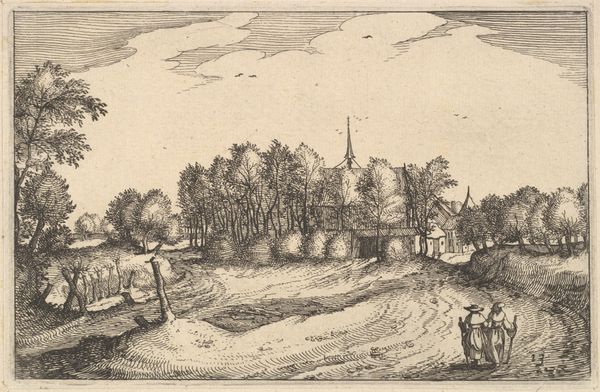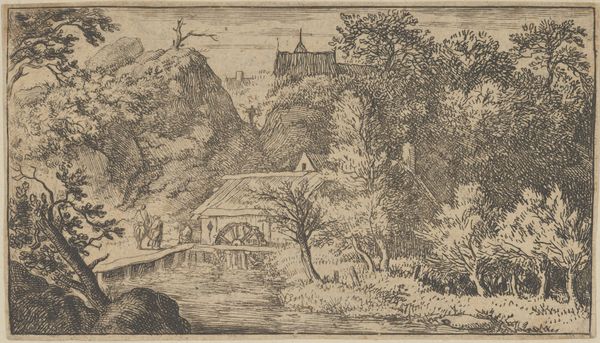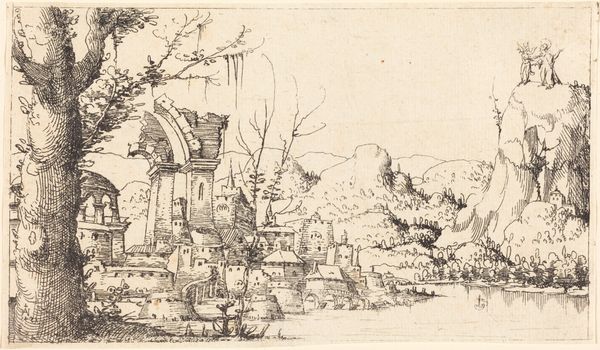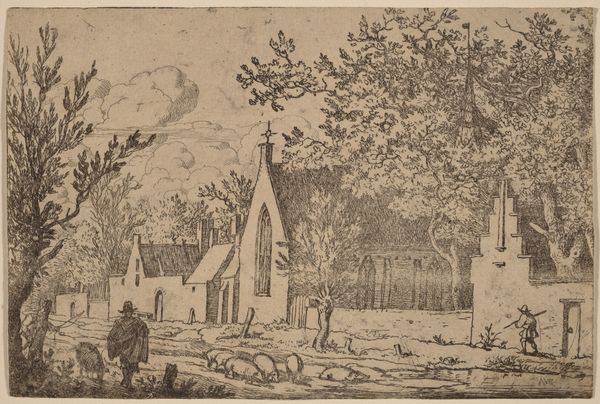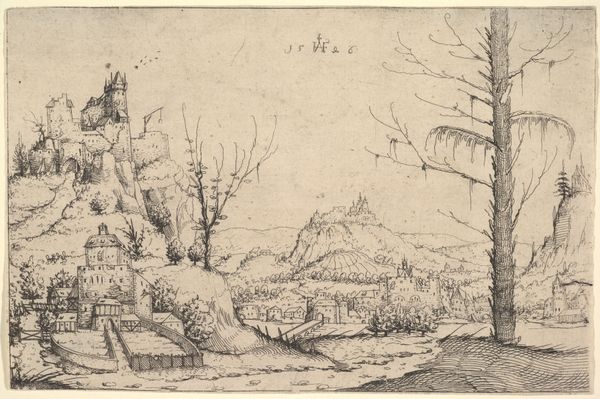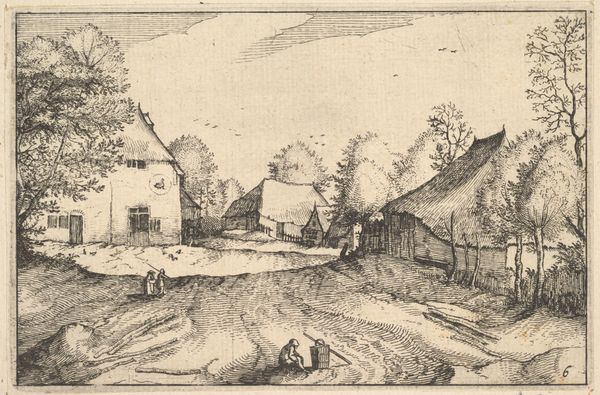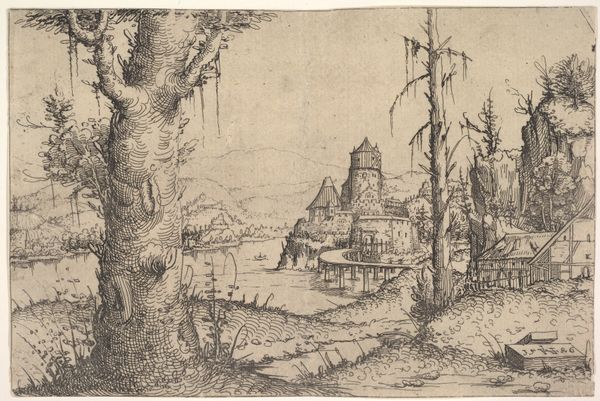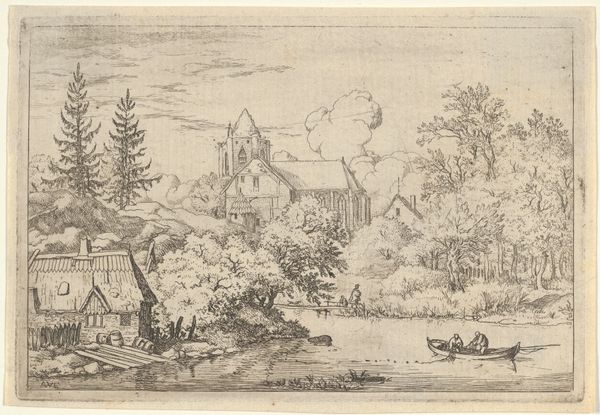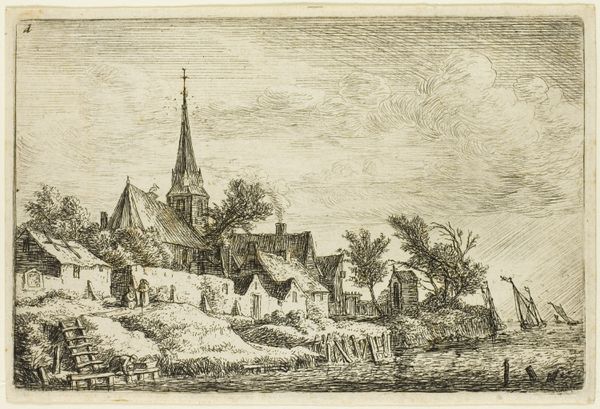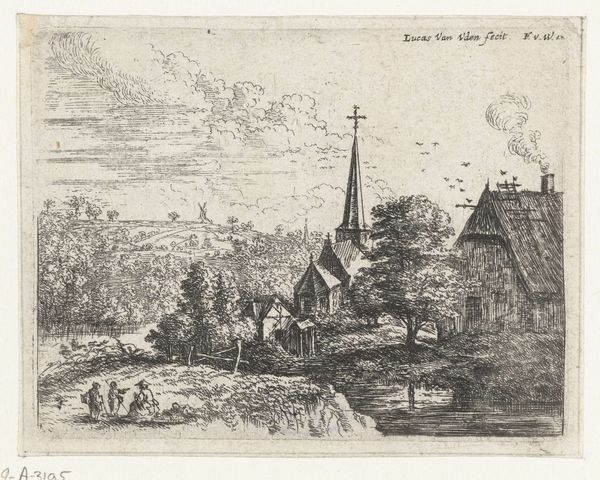
Landscape with Four Trees and a Church at Right (counterproof) 1545
0:00
0:00
drawing, print, ink
#
landscape illustration sketch
#
drawing
#
ink drawing
#
pen drawing
# print
#
pen illustration
#
pen sketch
#
pencil sketch
#
landscape
#
ink
#
ink drawing experimentation
#
geometric
#
pen-ink sketch
#
pen work
#
cityscape
#
northern-renaissance
#
pencil art
Dimensions: Sheet: 6 1/16 × 7 5/16 in. (15.4 × 18.6 cm)
Copyright: Public Domain
Augustin Hirschvogel made this landscape using etching, sometime in the early to mid-16th century. An etching begins with a metal plate, usually copper or zinc, which is coated with a waxy ground. The artist then scratches an image into the ground with a needle, exposing the metal. The plate is then immersed in acid, which bites into the exposed lines, creating grooves. The magic of this print resides in the contrast of open space with dense webs of etched lines. Note the painstaking work involved, and the transfer of hand skills to a repeatable industrial process. The result is a tonal range that can approximate the effect of drawing, but allows for a degree of crispness that is unique to printmaking. This wasn't just a way to produce images efficiently. It also fostered a new kind of artistic thinking, with the artist conceiving a composition in terms of reproducible marks. Processes like etching blurred the boundaries between craft and fine art, opening the door for a more democratic art world.
Comments
No comments
Be the first to comment and join the conversation on the ultimate creative platform.

